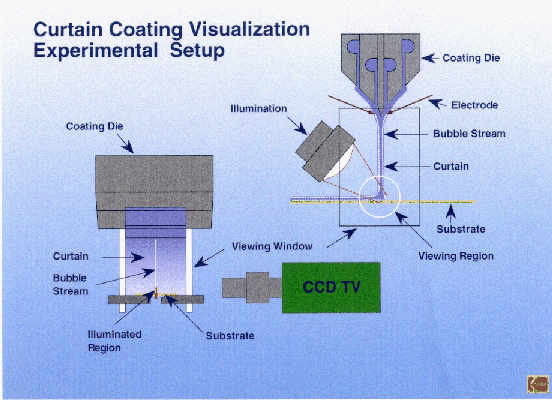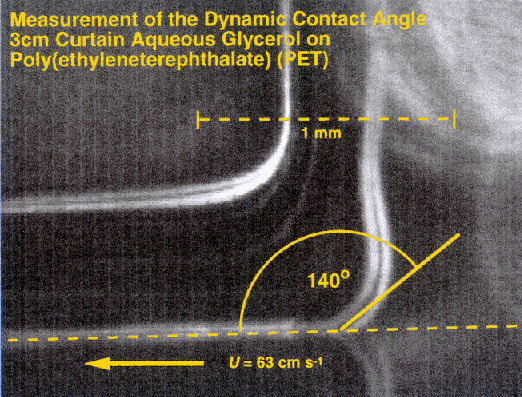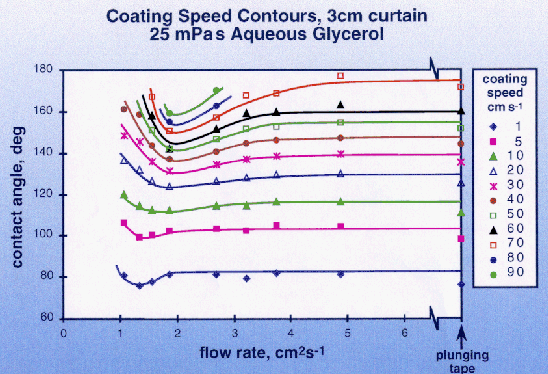

This functional form embraces all particular expressions known in the literature (polynomial relations including the so-called ``Tanner's Law'', Hoffman's ``master curve'', etc). Thus, for a given fluid/liquid/solid system the dynamic contact angle is assumed to be a single-valued function of the contact-line speed. Experiments reported recently [2] were aimed at examining whether this is indeed the case.

The study was carried out at Kodak European Research using the flow geometry of curtain coating, where a falling liquid film impinges onto a moving tape. This setup allows one to independently vary the flow conditions (the flow rate, the curtain's height, the angle between the falling curtain and the moving web) while keeping the contact-line speed the same. A typical image of the impingement zone at the foot of the curtain showing measurement of the dynamic contact angle is given below.

The results show that, at a fixed contact-line speed, the dynamic contact angle depends on all the parameters listed above, i.e. on the flow field/geometry in the vicinity of the moving contact line. In particular, the dynamic contact angle is a different function of U for different flow rates, as shown below

A quantitative analysis shows that this effect cannot be attributed to the bending of the free surface on a length scale smaller than the resolution of the measurements. In other words, according to a common view, for a given fluid/liquid/solid system and a fixed contact-line speed the dynamic contact angle should be a constant, while experiments show (see, for example, the figure below) that it can be varied by varying the flow field/geometry.

It should be emphasized that, since the flow field/geometry cannot in principle be reduced to a finite (or even countably infinite) number of parameters, there is no hope that the conventional approach can ever be repaired.